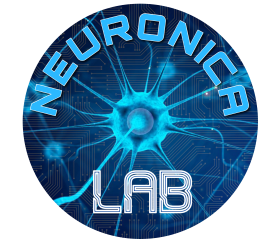Background and Motivations
Ergonomics is an important technology in the effort to remain competitive. It is increasingly a selling point of products and a major factor in productivity of workplaces. Testing the physical ergonomics of systems is costly, time consuming and current methodologies offer no guarantee of transferability of results. However failure to go through this process can result in a product that is non competitive or even usable. If it were possible to extrapolate and interpolate to many configurations of a workplace from a limited number of training configurations then testing would become quicker and cheaper. If it were possible to take the results of a previous test campaign and know how far they could be considered applicable to a completely new product then even more money could be saved.
Objectives
ANNIE will take human movement data from ergonomics experiments and use neural net computing to calculate how the test subjects would have moved in other circumstances. The application of this powerful computing paradigm to human movement data analysis promises to cut time and effort in ergonomics testing. The development of a common methodology for these experiments, when made available at European level, offers the opportunity to bring industrial R&D in this area across the continent up to the highest level. A considerable part of the effort will be given over to obtain user requirements from outside the group of partners directly involved in the project. In this way the resulting system will be more industrially relevant and the performance of the work at European level will be most productive.
Exploitation
From the beginning the research team will concentrate on industrially relevant scenarios while applying the utmost scientific exactitude. The combination of industry and academia with deep knowledge of ergonomics and biomechanics will temper each other. At the end of the project both the software and the methodology system will be feasible to actual industrial problems and, at the same time, open and flexible for future upgrades.
Acquisition of Real Human Movements
The goal of the ANNIE project is to support ergonomists in assessing the compliance of workplaces with ergonomic standards without resort to physical mock-ups and test campaigns. This is done through the design and execution of simulated experiments in 3D CAD environments. Here a virtual mannequin is required to perform some selected tasks, such as reaching and grasping or lifting an object. It is crucial to make the mannequin move in a human-like way. Traditional models and algorithms are not very well suited for this purpose: they rather give rise to robot-like movements. The first step thus consists in the collection of a database of real human movements. Two pairs of infrared cameras keep track of the paths followed by markers attached to some relevant locations of the human body. The overall process involves many subjects and many measurement sessions. However, once collected, the same data can be used for different virtual mannequins, workplaces and tasks.
Neural Network Processing
Artificial Neural Networks (ANNs) are adaptive systems that can learn from experience. They are currently used in a wide variety of applications, such as function approximation, shape recognition, control, forecasting, and many others. Their operation does not need any explicit modeling of the problem to be solved. In the context of ANNIE project “experience” is just the database of real human movements. ANNs do not simply “store” such information, but are able to interpolate and extrapolate from them, so that they can generate new movements in response to previously unseen conditions. The learning process can be very much computationally expensive. However, once trained, ANNs are typically very fast. Movements are foreseeable to be produced in nearly real-time on current generation workstations.
CAD Simulation
End users finally assess the quality of their own designs from an ergonomic standpoint within a 3D CAD environment. Upon definition of the mannequin and the workplace, the trained ANN module generates human-like movements in response to specific tasks and constraints. Such movements are then visualized by CAD tools, and their characteristics are checked in comparison with ergonomic standards. If the analysis suggests improvements in the design, this can be changed and tested again in a fully virtual loop.
